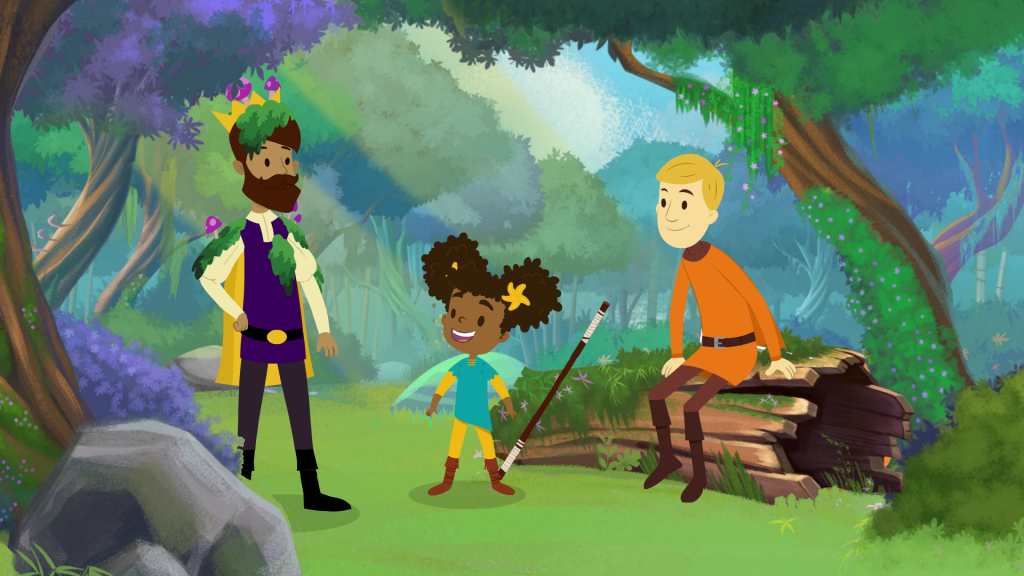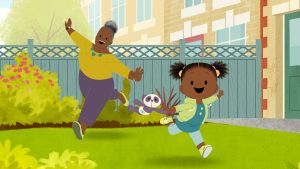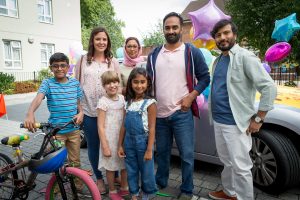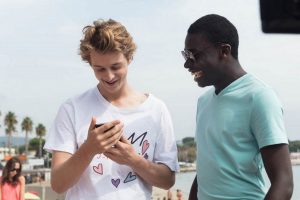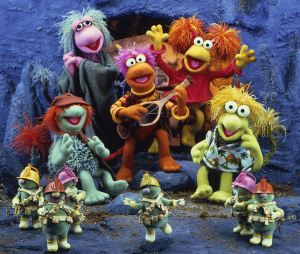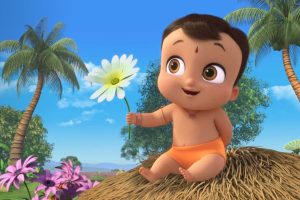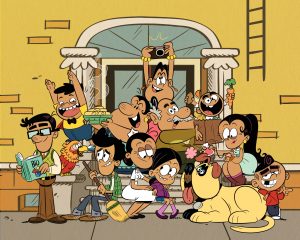
After more than 35 years of operation, TBI is closing its doors and our website will no longer be updated daily. Thank you for all of your support.
TBI Weekly: Delivering diversity in children’s programming
TBI deputy editor Mark Layton takes a deep dive to explore how the global TV industry is working to improve inclusivity and representation in children’s programming, and asks what needs to happen both in front of and behind the camera in order to bring about real change.
Every child deserves to see themselves reflected in the programmes that they watch, but while strides are being made to improve inclusivity and representation on screen, children’s television is still often poorly served.
Programmes with a female or BAME protagonist or featuring leading characters that are part of the LGBT+ community, disabled or from a lower socio-economic background remain, generally, the exception to the rule. And this is also an issue mirrored behind the camera.
Obviously, some territories perform far better than others in this regard when approaching the subject from an international perspective. But the invigorated global support for the Black Lives Matter movement in recent months, coupled with the drastic increase in children’s TV viewership during lockdown, has brought some of these issues into sharp focus in many territories and changes are taking place as a result.
“It seems to me that the high level of activity and the acceleration of heartfelt change that we’ve witnessed in the last few months is an indication that the TV industry as a whole could and should have done more sooner,” observes Cheryl Taylor, head of content for children’s programming at the BBC.
The UK pubcaster has a variety of inclusive content, with shows such as the pre-school animation Hey Duggee and the long-running magazine series Blue Peter being among the popular stand-outs. Its CBeebies channel also recently launched JoJo & Gran Gran, the first British-made children’s animation focused on a black family. While the series has been widely praised, a fair question is why it took so long for this landmark moment to reach screens.
“We know there is more we should be doing to stimulate stories based on a greater variety of experiences,” acknowledges Taylor, adding that animations with black protagonists have previously been “in short supply”.
“There is a sense that the animation industry still has some way to go in terms of representation in several key production areas – and this has impacted on the type of stories that are developed,” she says.
Where the BBC has seen improvements, Taylor expains that these have initially been led by a more representative approach to casting, as well as providing “focused support for new writers, directors and producers.”
She elaborates: “I’ve been impressed by the delicate development process on shows like Pablo [a hybrid live-action/animated series on CBeebies that follows a young boy with autism], wherein the employment of autistic contributors across several production disciplines ensured the important ‘seeing the world in different ways’ message of the show was conveyed from lived experience.
If we can relate to a talking pig or an anthropomorphic yellow sponge, then I think a bunch of kids that live on a council estate shouldn’t be that difficult to empathise with
Akin Akinsiku
Co-creator of Apple Tree House
“More recently, we have commissioned a raft of 10-minute monologues and seven-minute mini My Life documentaries as opportunities for new writers, directors and producers from under-represented groups to get their first role on a broadcast piece.”
Taylor also highlights series like children’s drama Apple Tree House, where the production team was able to provide training opportunities for directors from under-represented backgrounds – enabling the show to mirror the onscreen diversity.
Akindele Akinsiku, co-creator, director and writer on Apple Tree House, says that it was important to the team that the stories and characters featured in the series were relatable.
“Unfortunately, people assume if the characters are multi-ethnic, then the show and the urban setting might be alien to them. If we can relate to a talking pig or an anthropomorphic yellow sponge, then I think a bunch of kids that live on a council estate shouldn’t be that difficult to empathise with,” remarks Akinsiku.
“So Apple Tree House couldn’t just be a show about ‘diversity’. We wanted to create a positive show about everyday children who just happen to live in a rich and magical inner-city estate, one that didn’t involve the usual media inner-city tropes of poverty and crime that unfortunately are still commonplace.”
He continues: “To be honest, this is not rocket science. It’s paying attention to your environment and your entire audience, especially if you live in a big city. It’s never a bad thing if your audience is reflected in your show’s makeup.”
European lag
David Michel is founder and president of Paris-based production studio Cottonwood Media, as well as co-founder of French production and distribution firm Federation Entertainment and MD of its children’s division Federation Kids and Family. He suggests it has taken European networks longer to catch up to issues that the US industry has been tackling for many years already.
“When I produced Totally Spies!, back in the day, we had Disney Family and then Cartoon Network on board and having a character from a different ethnicity was very important to them. From our perspective as Europeans, at that time, it wasn’t as much on the radar, which I am sad to say, especially as we are all finally thinking in different ways now.”
He adds that, even today, he doesn’t get “enough diverse stories about characters of multi-ethnicity in Europe” brought to him as a producer and says that “you really have to make a clear and conscious effort about that.”
Michel says that while he has never received any pushback around the ethnicity of cast when selling shows abroad, he has faced resistance for including LGBT+ characters. Cottonwood Media produces the live-action teen dramedy Find Me In Paris for Hulu in the US. When creating the show, the team made a conscious effort to craft characters from diverse backgrounds, social groups and sexual orientations. “One of the various storylines features the relationship between two boys who are together and very happy, and we are vocal about this, but in certain countries we could not sell the show because of this,” says Michel.
“At one point we were presented with the choice of basically either taming down these stories, including with dubbing the show, or losing a sale – and we chose the latter. We didn’t want to compromise on that,” he reveals.
Shabnam Rezaei is co-founder and president of Canadian animation studio Big Bad Boo, whose series The Bravest Knight launched on Hulu last year. Based upon the book The Bravest Knight Who Ever Lived by Daniel Errico, the show follows a 10-year- old black girl and wannabe knight, whose adopted white father tells her about his own past adventures before he settled down with the prince of his dreams.
Rezaei’s experience of heading to market with a series fronted by a female character of colour and a same-sex relationship at the heart of the show echoes Michel’s. “It was really important to us to not just feature but also celebrate a two-dad household on our show, while also empowering young women – especially young women of colour,” says Rezaei. “We took the show out to MIPCOM first and received mixed reactions from international audiences, who may not be as ready to reflect reality.
“When we finally greenlit the show with our US partner Hulu, we realised how lucky we were to work with such an incredibly progressive and inclusive team. They were very committed to telling an authentic story about a modern family, which ultimately connects with audiences.”
American awareness
If the US TV industry is indeed leading the way in matters of inclusivity and representation, then kids’ powerhouse Nickelodeon is often seen to be sitting at the front of the class.
The channel has worked to ensure there has been a firm ethos of authenticity woven into its seams since the word go. “We simply said let’s authentically reflect the world in which kids live in at all times, from day one until today,” says Nina Hahn, SVP of international production & development at Nick.
This mission statement has led to the creation of many shows celebrated internationally for their inclusivity, from the multi-cultural makeup of Hey Arnold! to Dora The Explorer bringing one of the first Latinx cartoon characters to screens, and all done decades before any current push for diversity.
Nickelodeon’s current output also includes The Casagrandes, which features a character who has Down Syndrome, while the series Paw Patrol recently introduced a pup with a physical disability. But that doesn’t mean the company is resting on its laurels. Its parent, ViacomCBS, made a clear commitment to strengthening its commitment to inclusivity in its UK operations earlier this year, with its “no diversity, no commission” policy for suppliers.
“This is something that has driven the entire fabric of what it means to be a piece of content on Nickelodeon’s air, a piece of content made by a producer with Nickelodeon and also to even work at the company,” says Hahn. “If you’re trying to sell a show to Nickelodeon you should have done your homework to come with a concept that is authentic to kids and reflects the world in which kids live.
“It’s an instinct for Nick, it’s a natural part of our DNA. If you come to us without that, it’s not a conversation.”
The Jim Henson Company is also known for its history of promoting diversity. As its president of TV, Halle Stanford, puts it: “I always hear Kermit in the background saying: ‘It’s not easy being green.’”
The company has produced shows like Fraggle Rock, which she points out “was created to promote world peace and showcase interconnectedness” (and is being brought back as an Apple TV+ Original) and Sid The Science Kid, which Stanford says was “the first show where we really dug in and showcased kids from different racial, religious and economic backgrounds”. She adds: “I’m super proud that Sid was the first bi- racial pre-schooler on TV.”
The company is, of course, best-known for its work in animation and puppetry (or, rather, Muppetry), which is why Stanford says that the next step for Henson is to develop more live-action programming. “We need to make a shift towards showing real children up on the screen, even more. I’ve actually committed our slate to showcase more real children in terms of race, community and neurodiversity.”
Among the projects in the pipeline, Stanford reveals, is a show “focusing solely on the Latinx community and then another one specifically aimed at the neurodiversity community.” Stanford says the company has started to realise that “we don’t have to necessarily always go broad; we can always speak to a specific community.”
Streaming focus
The rise of streaming services has opened up the catalogue for children to view not just homegrown talent showcasing diversity, but also content produced by cultures different to their own.
“Streamers have played a big part as they have made a conscious effort in pushing diversity with great results,” says Michel, while Rezaei suggests that “digital platforms and newer media rebels” are the ones “allowing space for new stories to come out.”
Anish Mehta, CEO of Indian animation studio Cosmos-Maya, however, highlights how shows from some territories notably travel further than others. “We strive for our content to feature in the international market and enjoy the same acceptance and popularity as international storylines do in our home market,” he says, noting the disparity, but also the positives.
“The fact that we’re currently in an era where global streaming platforms are setting up shop in India signifies a welcome shift,” says Mehta. “Shows like Mighty Little Bheem have initiated a trend where a homegrown Indian title has worked really well with big streamers such as Netflix in international territories, and this is merely the tip of the iceberg.”
Ellen Solberg, head of content at global kids’ streamer Hopster, meanwhile, says that she sees “a huge positive coming from kids seeing different cultures represented on screen.”
Solberg adds that while culture representation is definitely improving with global streaming, there are still areas for improvement. “I’d like to see more stories where girls are leaders and boys are open about their feelings, where different family structures are shown, and where kids from different backgrounds, abilities and classes are represented.”
Last year, Hopster published a report titled Is Kids TV Making Your Child Prejudiced? which examined 50 of the most popular shows aimed at UK pre- schoolers on public service broadcasting channels, streaming and VOD services. Its findings included minimal disability representation in these shows, high rates of gender stereotyping, little evidence of LGBT+ representation and only six out of the 50 examined had BAME characters in leading roles.
Solberg comments: “Our aim has always been to be inclusive, but the report did highlight to us how many of the top shows are still lacking representation. It has definitely made us more aware of harmful stereotypes and underrepresented groups. When commissioning content, we always take this into account. In 2019, we created a show called Rainbow Stories, which introduces children to LGBT+ families and different family structures. In another Hopster original, Two Minute Tales, we meet BAME characters, LGBT+ characters, characters with disabilities and characters from different classes.”
Social immobility
While there has been more overt ground gained with pushes for racial, gender and sexual inclusivity, it is apparent that social issues and disability representation can often be left behind.
Olivia Dickinson, executive producer of the Inclusivity Now strand at the 2020 Children’s Media Conference, says that while there are positive examples like the aforementioned Pablo, disability representation in children’s programming can often be tokenistic.
Dickinson gives an example of an existing character introducing a friend with a hearing aid or in a wheelchair, rather than someone with those disabilities appearing as part of the regular cast of characters.
Stanford agrees these issues are “absolutely not given the same amount of attention” and has plans for Henson to “open ourselves up” to more projects focused specifically on the disabled community.
Dickinson also notes another troubling trend. Even in positive LGBT+ stories it is “often more acceptable to have a coming out story for boys. There is that sense again that the male experience gets to lead.”
On and off camera
While efforts are clearly being made to improve inclusivity and representation, all those spoken to by TBI for this feature agree that there is much more to be done. And the answer, to quote Akinsiku, is “not rocket science”. Beyond improving on-screen representation, broadcasters and content creators need to also put in the work behind the scenes – and at every level – whether that’s adhering to an ethos, implementing an initiative or ensuring that the content they create comes from a place of real authenticity.
“Things have changed a lot. It is certainly no longer incredibly rare to see BAME characters on children’s TV,” says Akinsiku. “But there is that little question of what lies behind the camera. We need more representation at levels where it matters, especially creative and shot callers. When you have influential people on side at the highest levels, it can make a difference.”
“True change comes from changing the make-up of the industry,” agrees Rezaei. “Until we see parity in top management, in the creative departments and the decision-making roles, we won’t make a huge dent in authentic storytelling.”
If these positives changes continue, however, Rezaei believes the future is an inclusive one. “I am convinced one day we will reach a place where kids can turn on the TV and feel like they are being represented and reflected. This will allow them to know that they are OK just as they are and that they are loved. That is what this is about. We want to make kids feel that they are loved and that they matter. That is the most important part in all that we do.”
This article first appeared in TBI’s August/September 2020 issue (click here to read in full). Both Big Bad Boo’s Shabnam Rezaei and Nickelodeon’s Nina Hahn can be heard talking about the kids’ TV industry in our most recent TBI Talks (click here to watch on demand).
